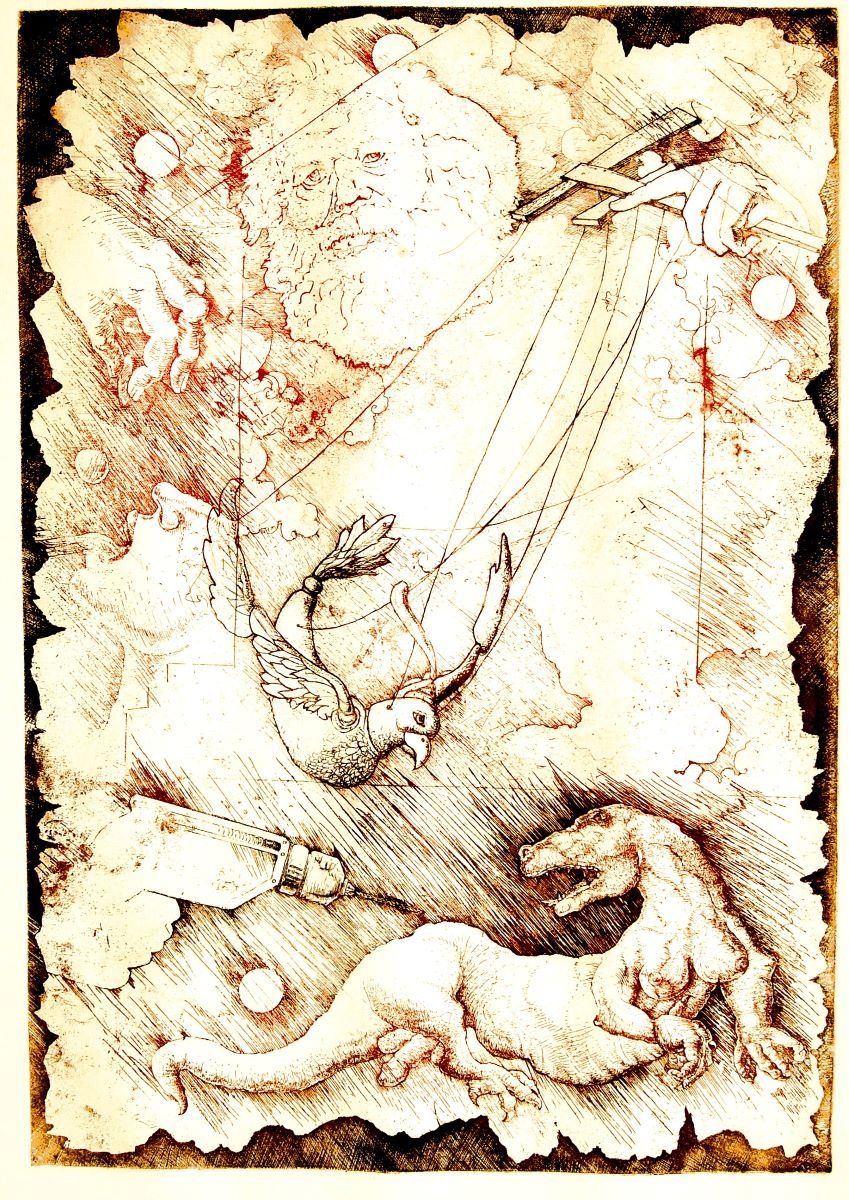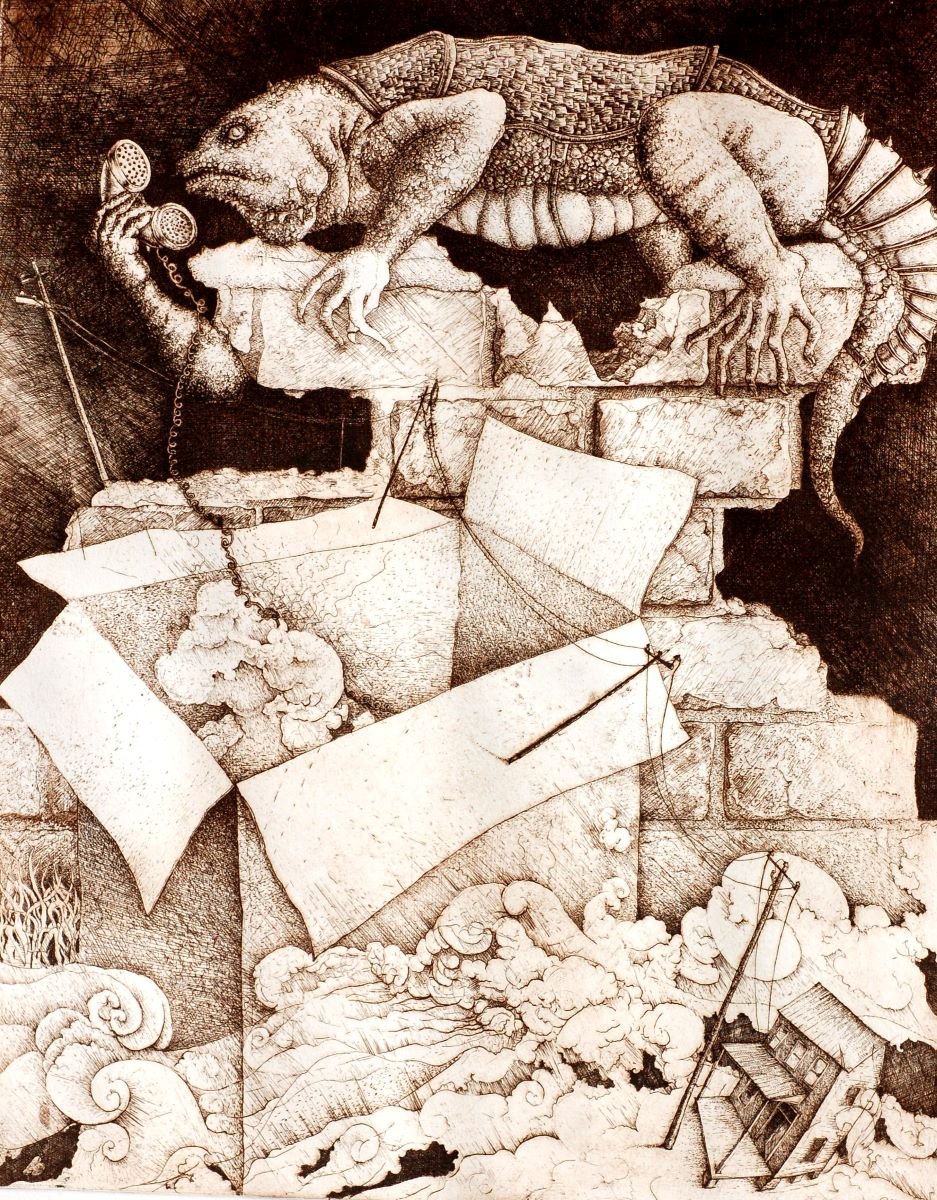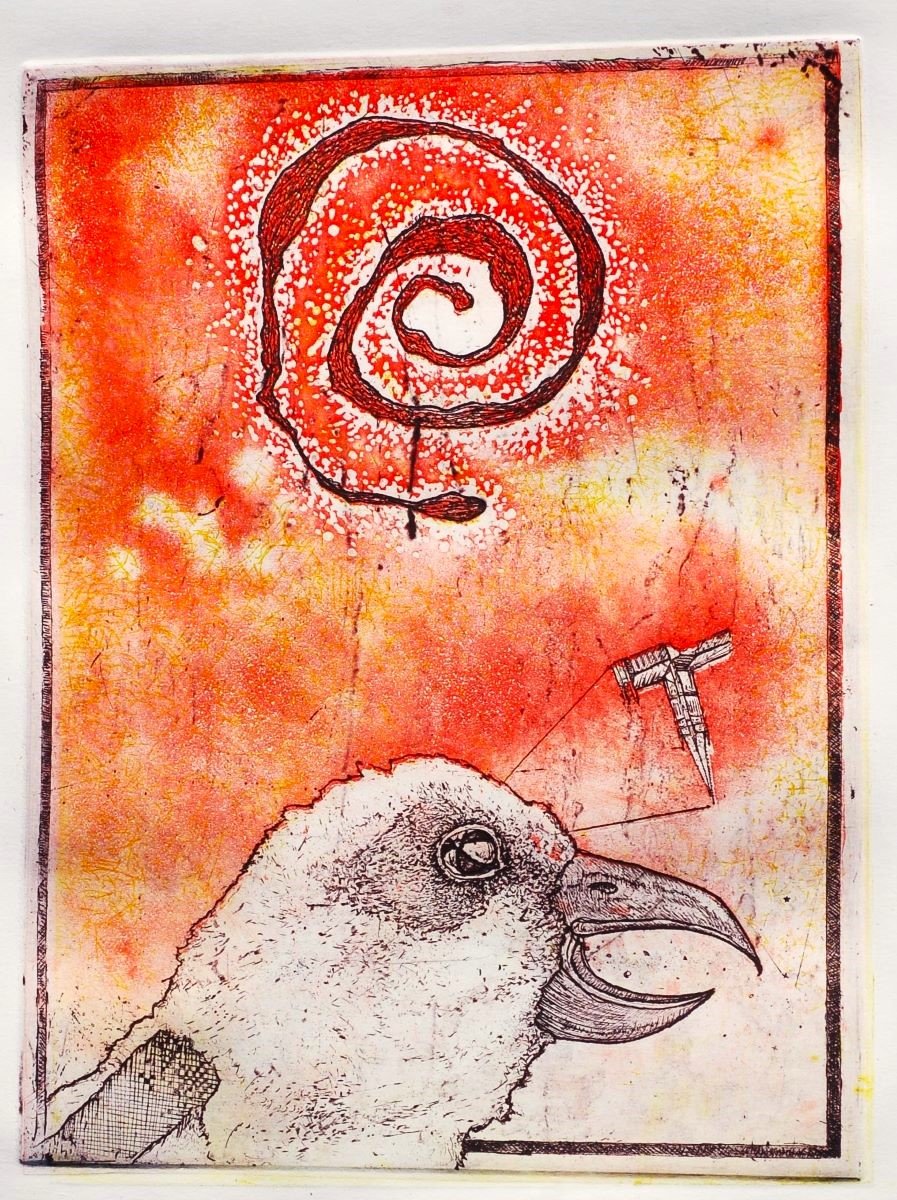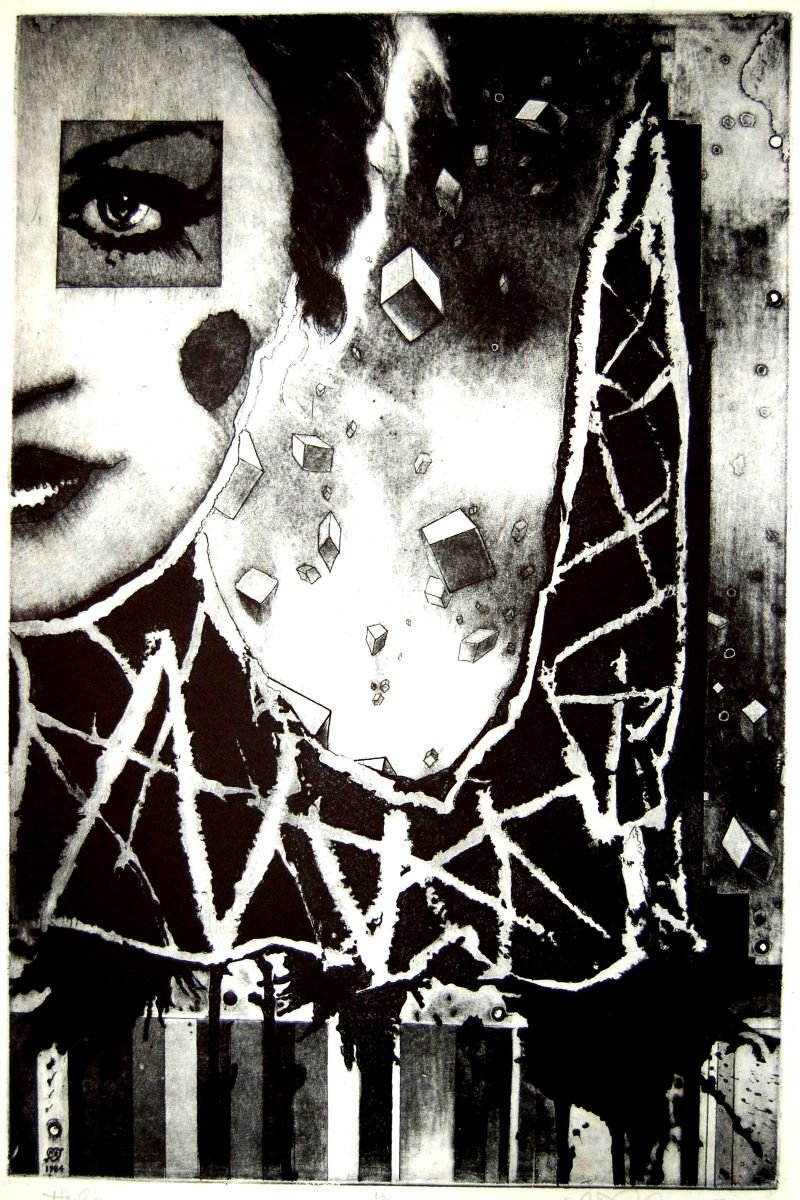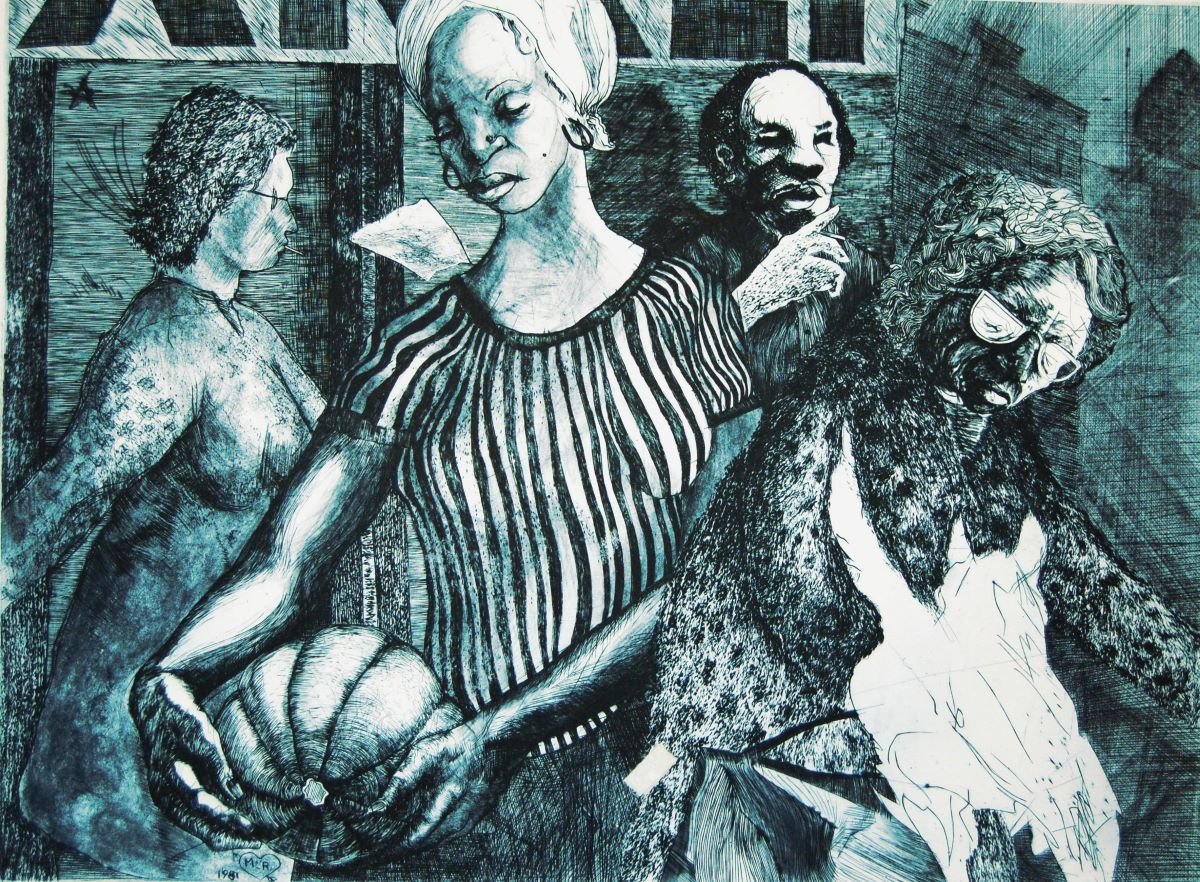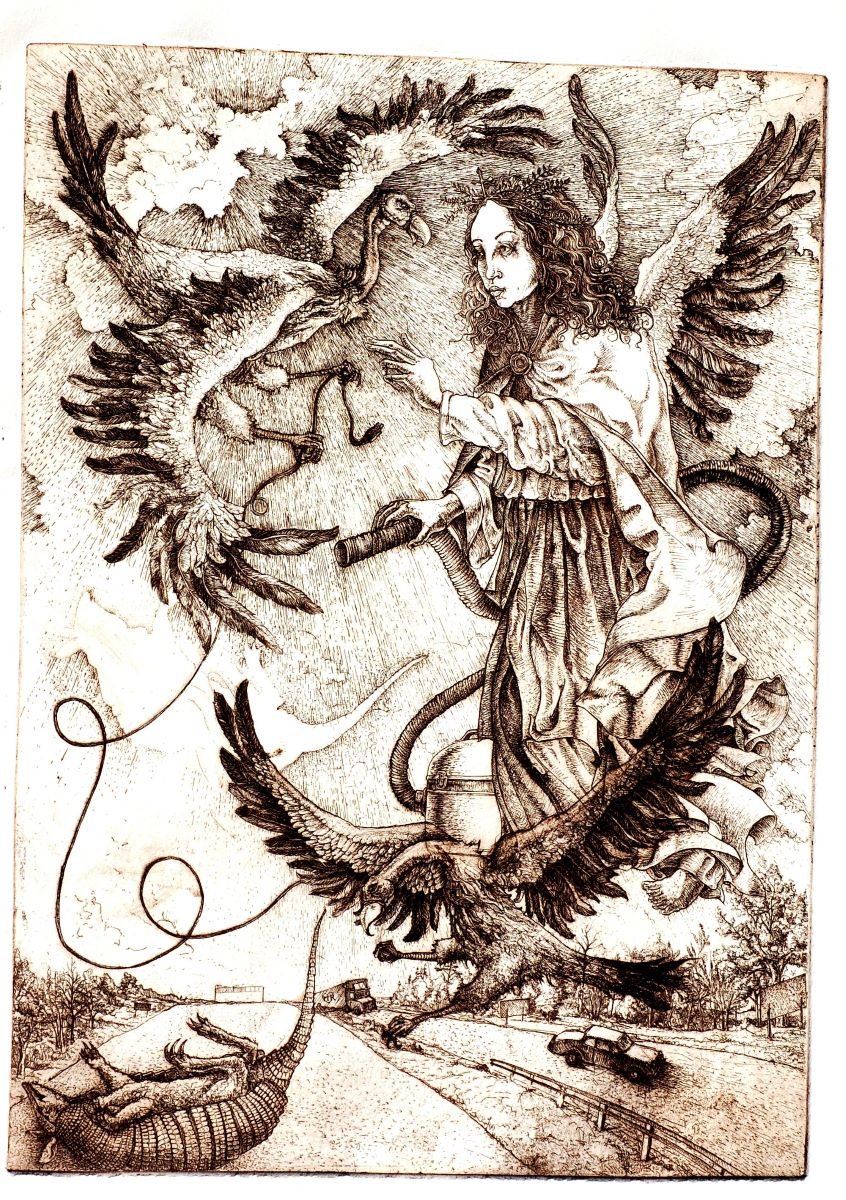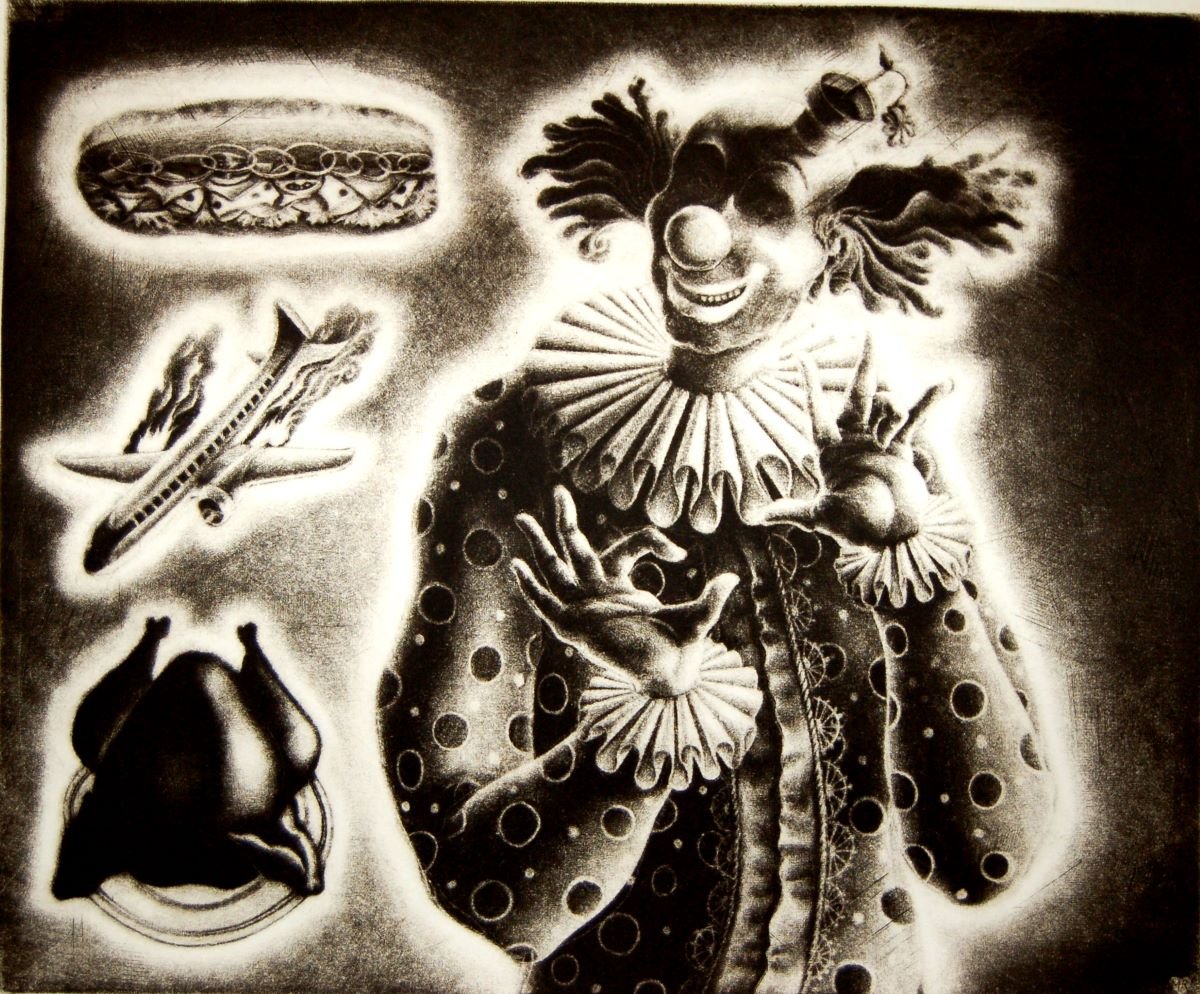Michael Richardson
Biography
In 1977, when he pulled his first print from an etched zinc plate at the Maryland Institute in Baltimore, Michael Richardson found what would be his most personal voice, in a diverse artistic career that included much work also in fields such as puppetry, building, and cultural preservation. Born in Washington D.C. to a military family, Michael was deeply inspired artistically by living both in Germany and Okinawa as a child, eventually obtaining four Fulbright Fellowships to Indonesia, Sri Lanka, and India to support his love of certain art forms and traditions from these cultures. In 1982, Michael went to the Central School in London for a year to study intaglio under Norman Ackroyd and Alan Smith. In 1994, he moved from Baltimore to Gulfport, Mississippi to set up his intaglio studio by the beach, which miraculously survived Hurricane Katrina’s floodwater in 2005. He received his MFA in Printmaking at Tulane University in New Orleans in 2003. He has taught as an adjunct professor for University of Southern Mississippi from 2013 to the present.
While still a printmaking student at MICA, Michael started working a side job as a puppeteer for a summer job program in Baltimore. That job led to an extensive artistic output within the field of puppetry, with over 2000 performances nationwide of marionette and shadow puppet theater. His long artistic collaborations with wayang craftspeople in Java for nearly three decades resulted in numerous awards and fellowships for his productions. He was a founding member of Black Cherry Puppet Theatre in Baltimore. In Mississippi, Michael created Red String Wayang Theatre which toured the Gulf South region until his retirement from puppetry in 2017. From 2018 until 2022, Michael worked part time as a Senior Scholar under the Fulbright India program , exploring new directions in a traditional Indian textile drawing medium called kalamkari that has strong connections to printmaking and narrative image making. Michael’s graphic output reflects 45 years of exploration of traditional intaglio methods, with special emphasis on line etching and mezzotint.
Michael Richardson has described his intaglio practice for most of his life, as his “intellectual playground” where his ideas and images could be explored without being shaped by questions of marketability or how some of the content of his intaglio work would be received. He has created well over 100 intaglio plates, spanning almost 50 years of unbroken production, waiting mostly until this period of his life for their full release. Michael’s work has been exhibited in numerous regional and international exhibitions such Contemporary Art Center New Orleans, Ohr-O_Keefe Museum of Art, Mississippi Museum of Art, Ojas Gallery Delhi, Auburn University, etc., and is represented in collections at both Museum Sonobudoyo Yogyakarta and Wayang Museum Jakarta, Indonesia.









